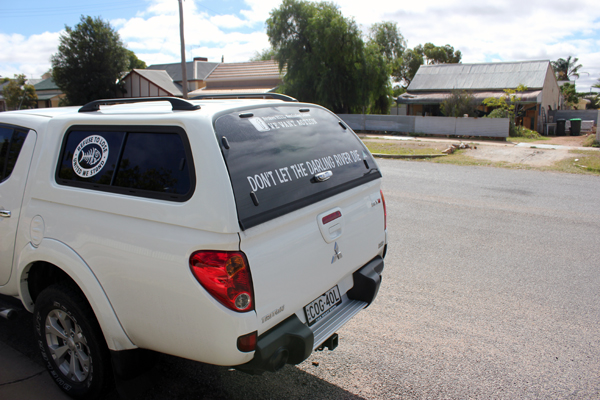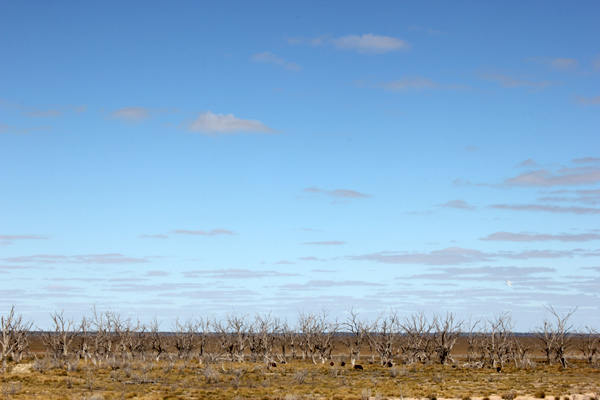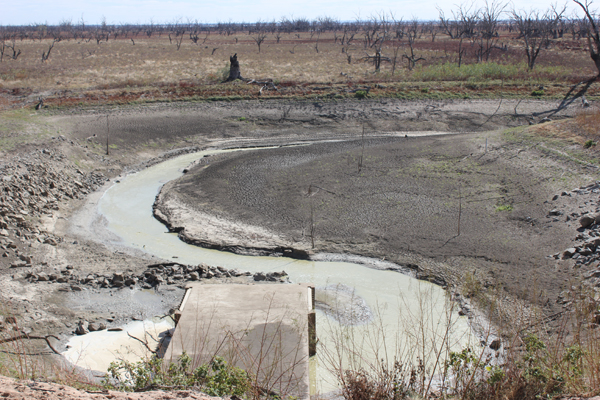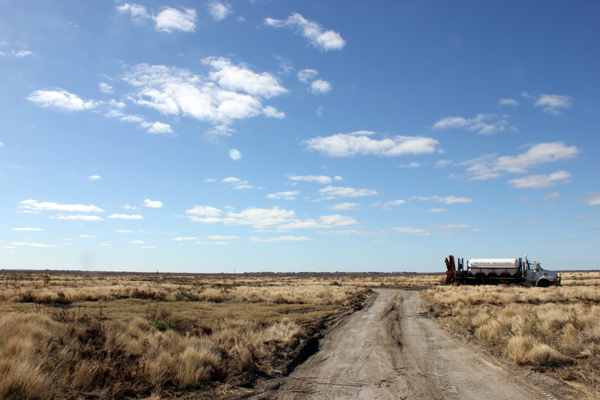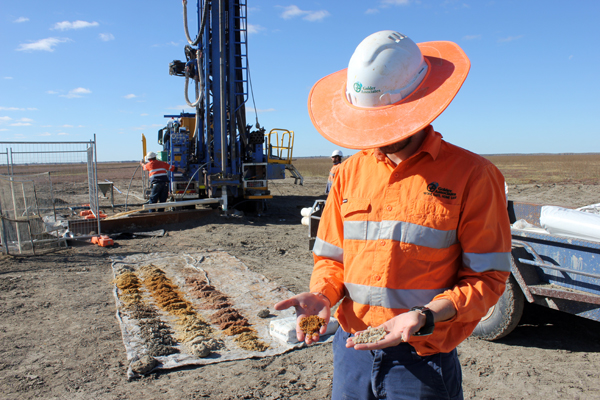As the drill is plugging downward at a thousand feet of level,
If the Lord won’t send us water, oh, we’ll get it from the devil.
—Banjo Paterson, “Song of the Artesian Water” (1896)
“YOU’RE under five metres of water right now,” Barry Philp says. “Hard to imagine, isn’t it?” I look through the windshield of his four-wheel-drive. The sky is blue and empty and the land is dead flat to the horizon.
We’re rattling along a grey clay track on the bottom of Lake Menindee, several kilometres from its shore. Three years ago the lake was full. Together with surrounding lakes, it held five times the water in Sydney Harbour. Beginning in 2010, two summers of severe rains had followed a prolonged, notorious drought in eastern Australia – “the millennium drought”. The land was flooded.
But yet again, so soon, the inland is wretched for lack of water. Rainfall in the past three years is tracking lower than the worst on record. Today, the lakebed is bone dry. In this improbable place, we are driving in search of water.
It is late April 2015. Four months ago, officials estimated that Broken Hill, population 18,000, would run out of water in August. They began a drilling program to find emergency supplies from underground.
A blue rig rises above the plain, surrounded by white trucks and men clad in orange and blue. Philp pulls up next to it. He grew up in Menindee, the hamlet nearby, and now manages the enormous Menindee Lakes storage infrastructure with his small team of seven. The system was built in the 1950s to secure a water supply for Broken Hill, 70 miles north-west. For the second time this century, it’s on the brink of failure.
We watch as water gushes from the bore, muddy at first, then clearer. Nick, a geo-hydrologist from Canada, takes samples. To complete the test, they’ll pump water from the well – about 55 yards underground – non-stop for two days, while assessing the results from three surrounding monitoring wells. What is the flow rate and quality? Is the water table dipping? Is water migrating through the aquifer?
But while the drillers are working seven days a week, the residents of Broken Hill are agitating just as hard for them to stop. A campaigning group called WE WANT ACTION has sprung up – its logo is a fish skeleton encased with the slogans: “Refuse to Lose” and “United We Stand”.
Mark Hutton, a long-ago retrenched miner, who now works on the hospital’s reception desk, founded its predecessor, the Darling River Action Group, during the millennium drought. He’s among the leaders of its vigorous online incarnation, which uses Facebook to publicise and scrutinise water supply issues and foment opposition to the bores. In these parts, resistance is a way of life. “We’ve been fighting the New South Wales government for 200 years,” he says.
Chemists define it as H2O, but in Broken Hill, water demands a more complex formula. Add salt and scarcity, erosion and evaporation, ill-considered dams and irrational irrigation, intractable politics, sacred sites, speedboats and roses. Stir up dissatisfaction and stand well back, because, within days, the state government will announce its emergency water strategy for the town.
Before I arrived, a policy worker had told me, exasperated: “Everyone comes new to water and thinks it just falls from the sky. It doesn’t. The Menindee Lakes system is one of the most complex water systems in one of the most variable climates in the world.”
And this, too: “You’ll hear all sorts of crazy talk in Broken Hill.”


